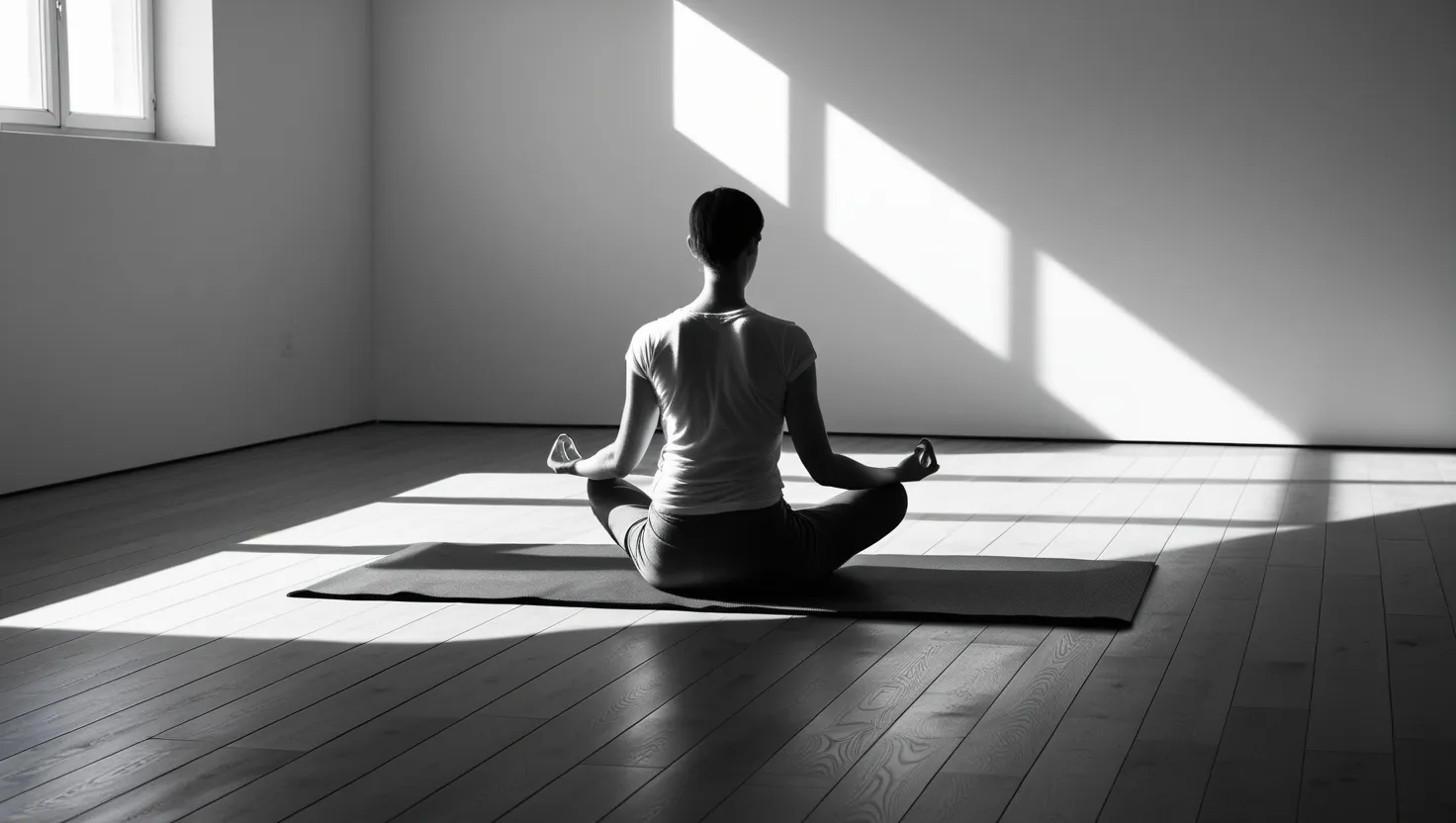The Art of Sitting Still: How Japanese Zen Is Changing Modern Life
I want to tell you something that might sound strange. In a world where we’re constantly moving, talking, and scrolling, the most powerful thing you can do is literally nothing. I’m talking about zazen—a Japanese meditation practice that’s been around for over a thousand years. And here’s the weird part: doing nothing is actually doing everything.
Let me explain this simply. Zazen means “sitting meditation,” and it’s not about achieving anything or reaching some magical state of mind. It’s just sitting. But when you sit the right way and pay attention to your breath, something shifts. Your nervous system calms down. Your scattered thoughts start to settle. Your body stops fighting itself.
Think about your day right now. How many hours do you spend completely present? If you’re like most people, probably not many. We’re at our desks thinking about dinner. We’re with family thinking about work. We’re eating lunch while looking at our phones. Our minds are everywhere except where our bodies actually are.
The Japanese figured out a solution centuries ago. They created a system to train your mind to stay put. Not in a restrictive way, but in a way that actually feels peaceful once you get the hang of it.
Starting Your Practice With the Right Foundation
Here’s where most people get it wrong. They think meditation is about achieving some special state where your mind goes blank. That’s not it at all. Your mind is going to produce thoughts. That’s literally what minds do. The practice isn’t about stopping thoughts; it’s about not getting caught up in them.
When I first sit down to practice zazen, I use a meditation cushion called a zafu. This isn’t just for comfort—though it is comfortable. The cushion tilts my hips forward slightly, which straightens my spine naturally. My knees touch the ground, creating a stable three-point base. This position matters because your body affects your mind. When your spine is straight and your body is grounded, your mind becomes more alert and stable too.
Have you ever noticed how your posture affects your mood? When you slouch, you feel different than when you sit up straight. It’s the same principle here. The posture isn’t arbitrary; it’s designed to help you stay present and awake.
I place my right foot on my left thigh and my left foot on my right thigh—this is called full lotus position. If that sounds impossible to you, don’t worry. Half-lotus, Burmese position, or even kneeling works fine too. The goal is finding a position you can hold still for ten to thirty minutes without your legs falling asleep. Yes, this takes practice. Yes, this is uncomfortable at first. That’s actually the point.
My hands rest in what’s called cosmic mudra. I place my right hand palm-up on my left foot, then my left hand palm-up on top of it. My thumbs touch lightly, and my hands sit a few inches in front of my navel. This hand position might seem random, but it serves a function. It prevents my upper body from collapsing forward or leaning to the side. Everything in zazen is this way—simple but purposeful.
The Breathing Part That Sounds Confusing But Isn’t
Here’s something interesting: you don’t control your breathing in zazen. This confused me for years. I thought meditation meant special breathing techniques—holding your breath, counting, controlling the exhale. But that’s not what happens here.
I sit quietly and let my breath do what it naturally does. In and out. In and out. The only instruction is to breathe from my belly, not my chest. Most of us breathe shallowly from our chests without realizing it. When you shift to belly breathing, your whole body relaxes.
But here’s the actual practice: I pay attention to the breathing. That’s it. I’m not trying to make the breath deeper or slower. I’m not trying to achieve anything. I’m just sitting there, present with the fact that I’m breathing. It sounds almost too simple, but that simplicity is the whole point.
What happens when your mind wanders? Because it will wander. Your brain might suddenly remember that embarrassing thing you said in 2015. You might think about what’s for dinner. You might worry about tomorrow’s meeting. And here’s the Zen approach: you notice it happening, and you gently bring your attention back to your breathing. No judgment. No frustration. Just notice and return.
This is what builds mental strength over time. Every time you catch your mind wandering and come back, you’re training your attention like an athlete trains muscles.
Walking As Meditation, Not Exercise
After sitting zazen, many practitioners do kinhin, which is walking meditation. This might be the least understood Zen practice in the West. We think of meditation as something you do while sitting still. The idea of meditation while moving seems contradictory. But kinhin shows that Zen isn’t about isolation from life—it’s about bringing full attention to whatever you’re doing.
When I do kinhin, I walk very slowly around a room or garden. I synchronize my breath with my steps, taking only half a step with each complete breath cycle. This isn’t a workout. It’s not about burning calories or getting your heart rate up. It’s about bringing the same quality of attention I developed while sitting to the act of walking.
I hold my hands in shashu position—my right hand holding my left thumb, with both hands held at waist level. My elbows stay slightly lifted. My posture from the waist up remains exactly like my zazen posture: straight spine, relaxed shoulders, chin tucked.
The walking is deliberate and grounded. No rushing. No dragging feet or creating noise. Just movement with purpose and presence. When I turn corners, I always turn right. Even this detail matters. There’s nothing random about Zen practice.
Why practice walking meditation? Because your real life isn’t spent sitting on a cushion. Your real life is spent moving through the world, eating meals, talking to people, doing work. Kinhin teaches you how to bring the calm, focused mind you develop in zazen into actual living.
The Eating Part Most People Forget
One of the most practical Zen practices is mindful eating. I’m not talking about some complicated ritual. I’m talking about sitting down with food and actually paying attention to it.
In Zen temples, people eat meals with full awareness. There are no phones at the table. There’s no television in the background. People eat slowly and chew thoroughly. They notice the flavors, textures, temperatures, and even the colors of food. Each bite is an opportunity to be completely present.
This might sound like torture if you usually eat while working or watching screens. But try it once. Sit down with a single piece of fruit or a bowl of soup. No distractions. Really taste it. Notice how the flavors change as you chew. Notice how your body feels as you eat. Notice how much more satisfying the experience becomes when you’re actually there for it.
There’s also a practical benefit here. When you eat slowly and mindfully, your digestive system works better. You eat less because you actually register fullness. You enjoy food more, which is kind of the whole point of eating in the first place.
Creating Space, Not Emptiness
Zen temples and homes are famous for their simplicity. This isn’t minimalism for its own sake. It’s not about stripping your life bare or becoming ascetic. It’s about removing what doesn’t serve you so you can focus on what does.
When I look at a typical Zen room, I see maybe a few items: a mat, a cushion, perhaps a single plant or stone, a window. The space breathes. Your eyes rest when they look around. Your mind doesn’t have to process hundreds of visual stimuli competing for attention.
I don’t need to turn my whole house into a Zen temple. But I can create one corner where things are simple and organized. A single shelf with only what I actually use. A chair in the corner with a plant beside it. A blank wall where my eyes can rest.
This matters more than people realize. Our external environment affects our internal state. Cluttered spaces create mental agitation. Simple, organized spaces create mental calm. It’s not mystical; it’s how human attention works.
The Evening Reflection Nobody Talks About
Most discussions of Zen focus on morning practice, but evening reflection is equally important. Before bed, I sit quietly for just five or ten minutes and review my day without judgment.
Did I have moments where I was fully present? Maybe during a conversation, a meal, or a walk. Did I get caught up in worry or distraction? Probably multiple times. The practice isn’t about feeling guilty about the distracted moments. It’s about noticing them and gently setting an intention for tomorrow.
This practice prevents meditation from becoming something isolated from real life. It connects your sitting practice to your actual experience. It shows you where you’re present and where you’re still getting lost in thought. Over time, you start living with more presence throughout your day, not just during formal practice.
Why This Matters Right Now
We live in an age of constant stimulation. Our phones are designed to grab our attention. Our jobs demand constant productivity. Our news feeds never stop. In this context, the ability to sit still and pay attention is becoming rare and valuable.
Zazen isn’t an escape from modern life. It’s training for it. You’re developing the skill of attention. You’re teaching your nervous system that it’s safe to slow down. You’re learning that doing nothing is actually doing something quite important.
What would your life look like if you could stay focused on one thing at a time? What would your relationships improve if you were actually present during conversations? How would your work change if you could bring full attention to it?
These aren’t hypothetical questions. Thousands of people who practice Zen report measurable changes: less anxiety, better sleep, improved relationships, greater clarity at work. It’s not magic. It’s just what happens when you train your mind to be present instead of scattered.
The beautiful part? You can start today. Right now. You don’t need special equipment beyond a cushion or chair. You don’t need to join a temple or study complex philosophy. You just need to sit, pay attention to your breath, and gently return your attention when your mind wanders.
That’s it. That’s the whole thing. And somehow, that simple practice has the power to change how you experience your entire life.






